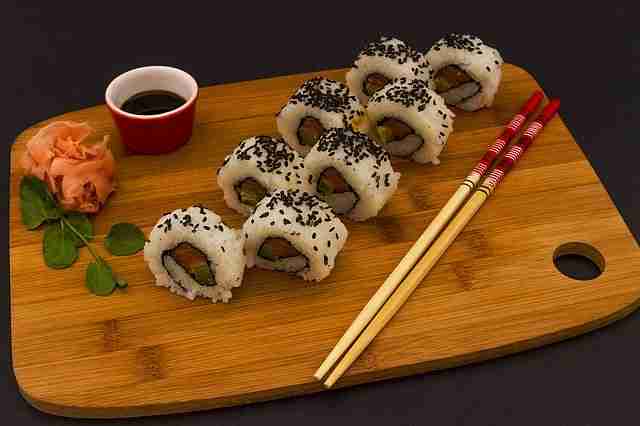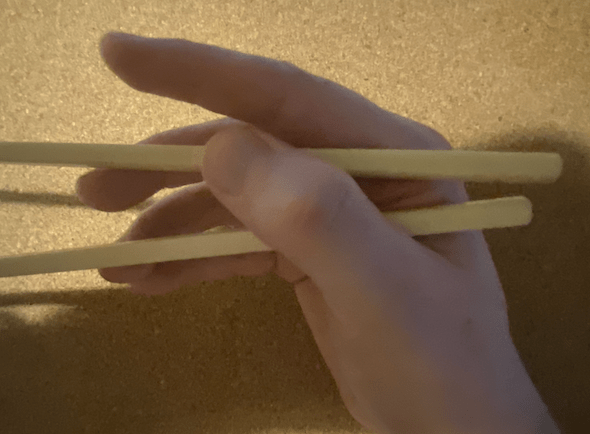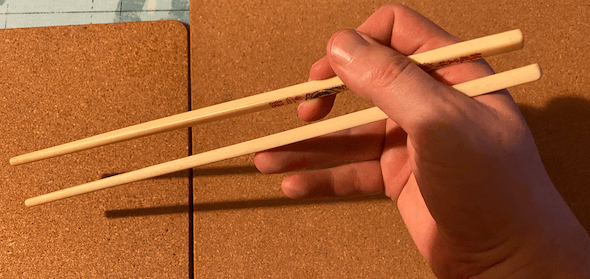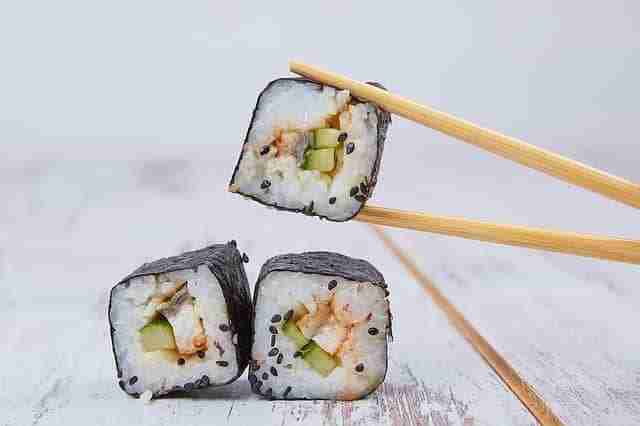Planning to visit a country like Japan, China, and Vietnam that uses chopsticks instead of forks. And while visiting these countries you want to enjoy the culture and food and to eat like a local. It is not a bad thing to learn how to use chopsticks properly.
They are restaurants all over Japan, China, and Southeast Asia where chopsticks are the norm, and forks aren’t even offered as cutlery. Unless you plan to bring a fork with you everywhere or you can learn how to use a chopstick.
In this post, we will go through how to use chopsticks properly and enjoy local Asian food. Let’s get started!
Read More On Our Travel Tips
- Mistakes To Avoid When Traveling Solo
- Best Way To Keep Your Passport Safe While Traveling
- What Is The Best Travel Hacks To Save Money?
- Important Travel Essentials
- Beginners Guide To Airbnb
- Best Travel Apps For iOS And Android
- Airbnb Frequently Asked Questions For The First Time Guest Users
There Are Different Types Of Chopsticks
Chopsticks are an iconic part of Asian culture and food. Chopsticks are not only used in China but also in Japan, Korea, Vietnam, and other southeast countries.
As a result of chopsticks being in each country, there are different types of chopsticks that are modified or adjusted to their local cuisine in each country. The main types of chopsticks are.
- Chinese Chopsticks.
- Korean Chopsticks.
- Japanese Chopsticks.
Chinese Chopsticks
Chinese chopsticks have a blunt at the end of the chopstick. And shaped in a rectangle with Chinese chopsticks are both much thicker and longer than the Korean and Japanese chopsticks.
Chinese food tends to come pre-cut into smaller and more manageable pieces. It’s much faster to cook when all your food is in bits and pieces.

Korean Chopsticks
Korean food is based on eating seafood. And Korean chopsticks are made from metal cause after the Korean War, most of the land was stripped of trees, so you have nothing to make chopsticks with, metal.
Cause of the metal being used to make Korean chopsticks it can be hard to pick up food with the chopsticks so they made the chopsticks flat so that they can pick such foods easier.

Japanese Chopsticks
With Japan being an island, its food is seafood-based. Japanese chopsticks have pointy tips as you can pick fish bones easier than blunt chopsticks. They are shorter than the Chinese chopsticks.

What Are Materials Chopsticks Made From?
Chopsticks consist of two sticks, that are smoothed and frequently tapered and are commonly made from the following material.
- Bamboo.
- Plastic.
- Wood.
- Stainless steel.
- Silver.
- Titanium.
- Gold.
- Porcelain.
- Jade.
- Ivory.
Chopsticks are also made from titanium, gold, silver, porcelain, jade, and ivory, but this is not common.
- Bamboo and wooden chopsticks are inexpensive, don’t conduct heat, and also have a good grip for holding food. The downside is that over time they can warp and deteriorate with continued use.
- Plastic chopsticks are inexpensive, aren’t a good conductor of heat, and are resistant to wear and tear. Plastic chopsticks tend to be slippery with handling food.
- Metal chopsticks are durable and easy to clean, but metal is slippery.
- Ivory, gold, jade, and silver are typically for the luxury market.
What Are The Pros And Cons of Eating With Chopsticks?
There are benefits of using chopsticks instead of a fork but there are also cons. Here are the pros and cons of using chopsticks.
The Pros
- You look more cultured. Help you save face when eating around Asians.
- They force you to eat slower and smaller amounts which is better for digestion and feeling fuller. Great if wanting to lose weight.
- Disposable chopsticks normally are made with bamboo, this can be better for the environment than plastic.
- When knives and forks sometimes made contact with ceramic plates, they make a screeching noise. You don’t get that with chopsticks.
The Cons
- Hard to slice food with chopsticks, only with Asian-style meals where the meat has already been cut up.
- Harder to learn to use or adapt to. If you are used to forks, it takes time to learn how to use the chopsticks even to get used to using chopsticks. With a fork, you just grab and stab, but with chopsticks, you have to learn the balance with 3 fingers.
Material You Will Need
There are a couple of things you need before you can start to learn how to use chopsticks properly. These are as follows.
- A pair of clean chopsticks.
- Food to test and practice eating with chopsticks.
How To Use Chopsticks Properly?
The reason you are here is that you want to learn how to use chopsticks. You need to become familiar with how to hold chopsticks properly.
This can be tricky to get the hang of them. However, if you want to experience another culture whether you are in Japan or China, using chopsticks is a skill you’ll want to get acquainted with!
Let’s get started on an easy and proper way to use chopsticks.
The First Step
First, you need to pick up the first chopstick and hold it in your dominant hand. This one is your anchor, meaning it should not move.
You want to hold the chopstick still, pressing it down with the base of the thumb against the V of your hand and the supporting finger.

Step 2
Take the second chopstick with your index finger and thumb. This is the stick that moves.
This allows it to press gently to hold food between the chopsticks almost at their tips.

Step 3
The pad of your thumb holds the chopstick that moves against the side of your finger. This will actually move the chopstick.
Now you use your index and middle fingers to open and close your chopsticks.

The Final Step
Now it is practice, practice, and practice! Start by practicing opening and closing the chopsticks. And then start on food or objects.
Remember not to squeeze too hard.
What Is Good Chopstick Etiquette?
Chopsticks in a lot of ways are very culturally, and they are also very symbolic. This applies to China and other Asian countries.
Doing something innocent could be misunderstood as an insult or worse that could lead to confrontation. And that is something that you don’t want while on your holiday.

To avoid any misunderstanding, we have got you a list of chopsticks etiquette you just need to be aware of when using chopsticks in Asia.
- Don’t cross the chopsticks. It is considered rude.
- Don’t put chopsticks in your mouth. Particularly in the way that you might accidentally get stabbed in the throat.
- Don’t use chopsticks to stab food. Use a fork if you want to do that.
- Don’t stab others with chopsticks. This shouldn’t need an explanation.
- Don’t wave chopsticks around.
- Don’t stick chopsticks in your rice. This resembles offerings to the dead, so it could be understood as showing disrespect to others at the table by implying that they are dead.
These etiquettes are more or less common sense and easy to remember. Enjoy the local food.
Why Do People Rub Chopsticks Together Before Using Them?
The reason that people rub chopsticks together is to remove any wooden splinters that maybe they’re on cheaply made utensils.
Is It Rude To Put Chopsticks In Your Mouth?
You should not put chopsticks in your mouth because it is considered dangerous, should someone bump into you, or your slip and land face-down.
Why Is It Disrespectful To Put Chopsticks In Rice?
It is considered disrespectful and very taboo as it resembles offerings to the dead. These offerings at funnels are where a bowl of rice is left as the offering with two chopsticks standing vertically in the center.
It’s also supposed to bring bad luck.

Is Crossing Your Chopsticks Rude?
Crossing chopsticks is considered taboo as it is the symbol of death.
USEFUL TRAVEL RESOURCES
Book Accommodation
Booking.com has a large range of properties from hotels, hostels, guesthouses, and resorts where you will find the best deals. Airbnb and Hostelworld also have a good range of places to stay at good prices.
Booking Flight
Skyscanner is a flight search comparison website that searches millions of flights all at once. Ultimately it is the best flight comparison website online at the moment.
Booking Transportation & Things To Do
Rome2rio and 12Go are useful to plan how to get anywhere by searching train, bus, car, and ferry routes. Especially useful in countries like Vietnam or Thailand. While Klook is great for exploring things to do in each place.
Travel Insurance
Travel insurance is cheap and more than likely you will never need to use it but you will have peace of mind if something does happen, you are covered in case of an emergency. World Nomads have great customer service and competitive prices.
Check out our resource page for the best companies to use when you travel.
Wrapping Up
Finally, learning to use chopsticks is a great way to enjoy and engage with the local culture and local food. Practise is required to get used to chopsticks but it is worth it. Remember your chopstick etiquette to prevent any misunderstanding.
And that’s it for now! I’d love it if this post on how to use chopsticks properly was helpful to you. Let me know if you have any questions and let me know if there is more to add.
Did you enjoy this post? Then don’t forget to pin it!





